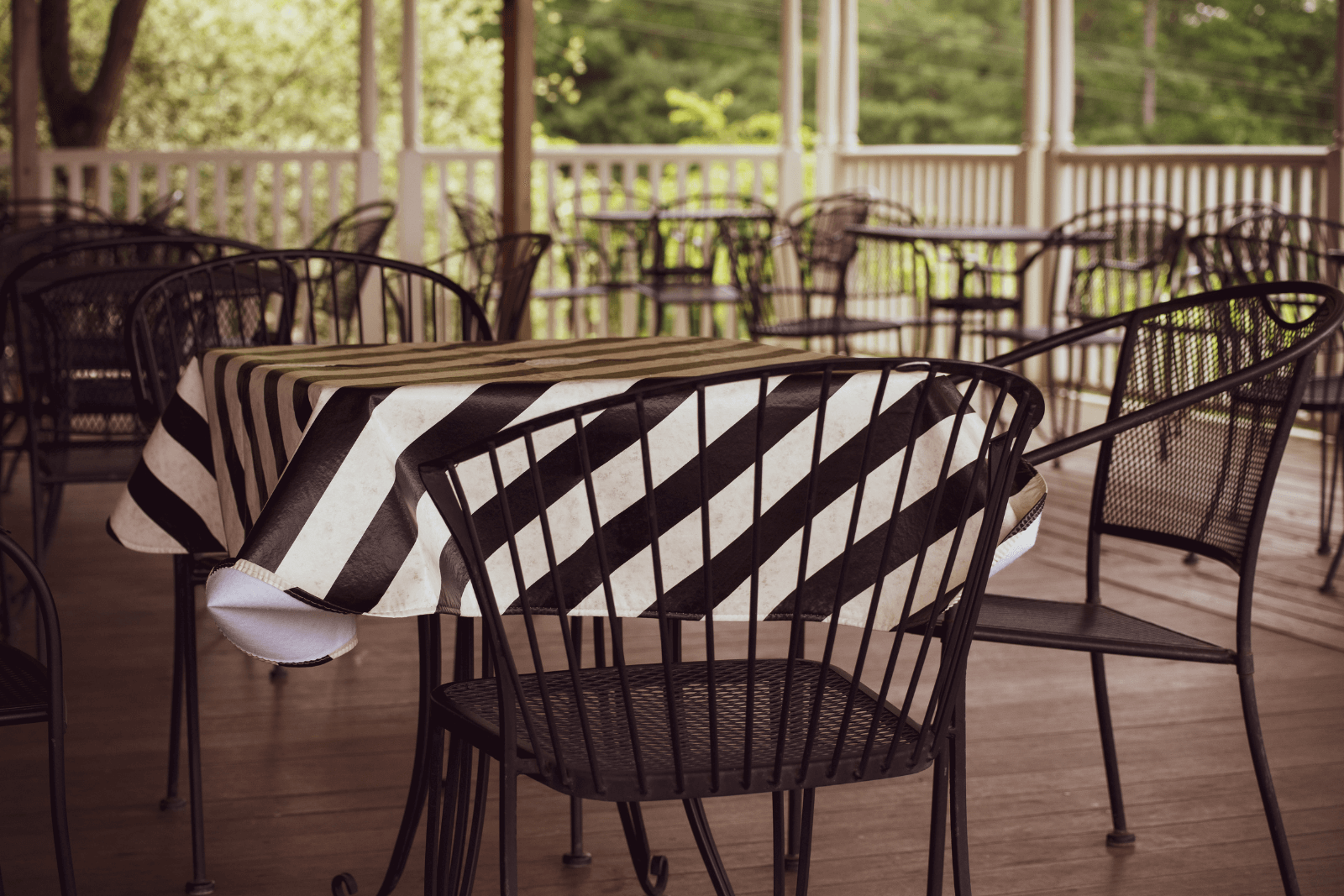You’re on a trip to Istanbul with some friends and you come across a cozy-looking fish restaurant that promises delicious food, so you all decide to sit down for dinner.
The food is amazing, the view’s great, and the servers are friendly and professional.
However, when the time comes to settle the bill, a minor hiccup suddenly reveals a larger issue.
The party asks for the bill once, but nothing happens.
They ask again, and after the second request, followed by an even longer wait, the server returns with a handwritten receipt.
While the prices match the menu, the puzzling delay makes it clear that the restaurant still relies on the time-consuming process of manually jotting down orders, and that the prices are calculated in the same way.
What a letdown at the end of an otherwise great evening, right?
Well, that’s exactly what happened to one of our team members.
The experience made us reflect on the challenges that restaurateurs face when manual tasks slow down operations.
Hopefully, you don’t hand out handwritten receipts to your guests, but maybe you still do some other repetitive tasks manually.
If that’s the case, it might be time to consider restaurant automation tools.
The fish restaurant we mentioned at the beginning of this article would definitely benefit from it.
We’ll explore five automation tools every restaurant should implement to save valuable time and resources and ultimately, improve every guest’s dining experience.
So, let’s dive in.
Table of contents
- Restaurant Reservation Software
- Digital Waitlist
- Digital Menu
- Cloud-Based POS System
- Kitchen Display System
- Conclusion
Restaurant Reservation Software
The first tool that every restaurant should implement to streamline operations is restaurant reservation software.
In essence, this software automates your reservations, eliminating the need for time-consuming phone calls and manual reservation tracking.
However, it's not just about operational efficiency—it's also about ensuring guest satisfaction.
The Industry Report by Toast revealed that over half of diners prioritize a restaurant's ability to offer online reservations as the most valuable technological feature.
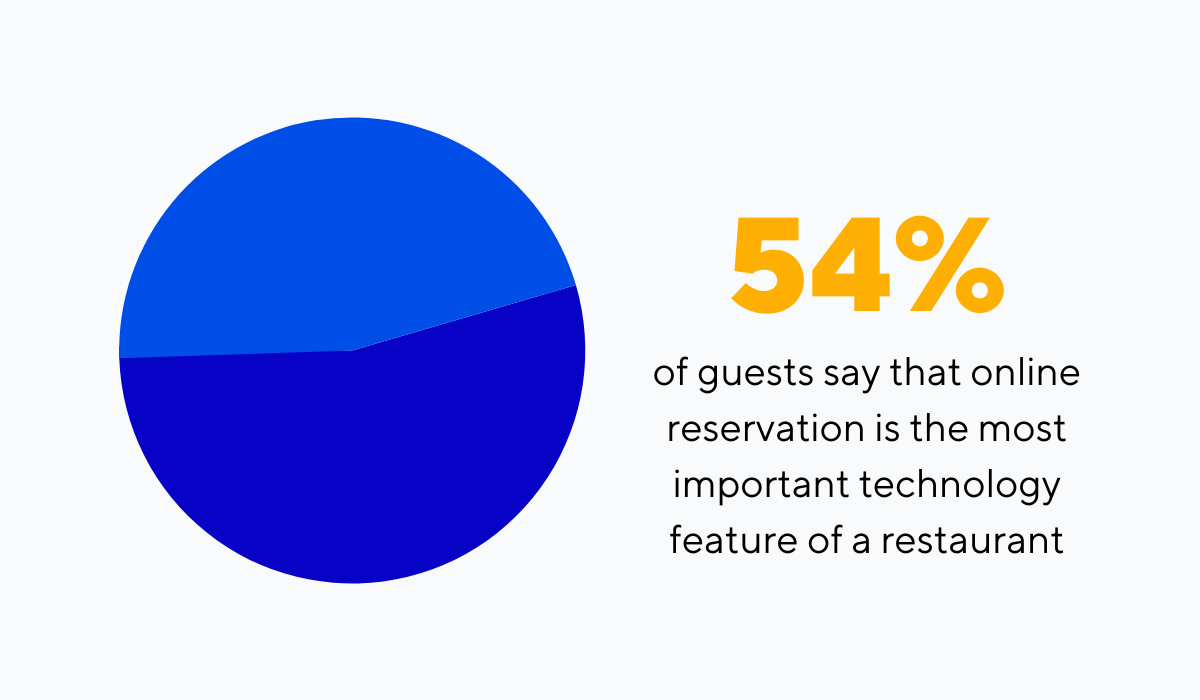
Illustration: Tablein / Data: Toast
Why is this feature so popular?
Because it provides convenience and peace of mind to customers.
With online reservations, there's no need for customers to be kept on hold, wondering about table availability, or risking last-minute disappointments.
Let's clarify and explain how reservation software can revolutionize your restaurant's reservation process with the example of our restaurant reservation software—Tablein.
Tablein boasts a user-friendly interface that simplifies the booking process, enabling both customers and your staff to easily manage reservations.
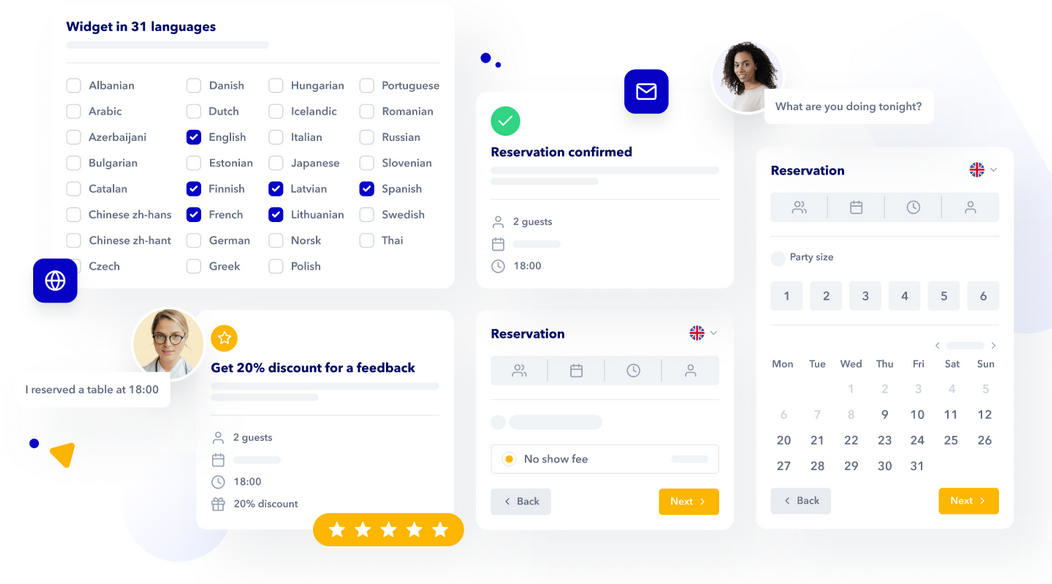
Source: Tablein
It offers features such as real-time availability updates, automatic confirmation emails, and seamless integration with your restaurant's website.
Not only does Tablein eliminate the need for manual reservation note-taking, but it also reduces errors, ensuring that all reservations are captured correctly.
As a result, this saves you precious time and valuable resources, as you no longer need to assign staff members to manage reservations over the phone.
And, perhaps most importantly, it's a win-win for your customers.
Diners can effortlessly reserve their preferred tables in advance. They can even select their desired section of the restaurant in the reservation widget, like in the example below:
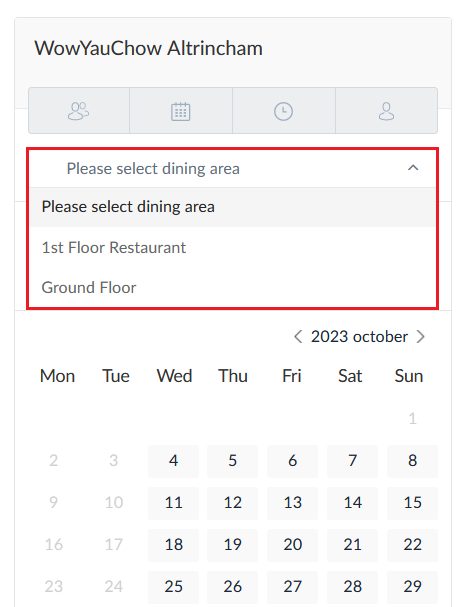
Source: Tablein
For your staff, this means fewer phone calls to manage and more time to focus on providing exceptional service to guests already seated.
On top of all that, Tablein offers valuable insights through its reservation analytics.
This feature helps you understand booking trends, identify peak dining times, and gain insights into your customer preferences.
All of this aids in making better-informed decisions for your restaurant's success.

In conclusion, restaurant reservation software has become an indispensable asset in the modern dining industry.
It streamlines operations and aligns seamlessly with guest preferences for hassle-free bookings.
Given the growing number of restaurants benefiting from this technology, the question isn't whether to automate reservations but how soon you'll embrace this transformative tool in your restaurant.
Digital Waitlist
Efficiency and guest satisfaction are vital in restaurant operations.
One important tool that can help you achieve this is the digital waitlist.
Imagine a busy restaurant managing its waitlist manually. Chaos and long waits can occur, leading to a poor guest experience.
In fact, if you handle your waitlist manually, you risk losing potential diners altogether.
Statistics indicate that 38% of diners would wait 15 to 30 minutes for a table but not longer, while only 2% would wait longer than 1 hour.
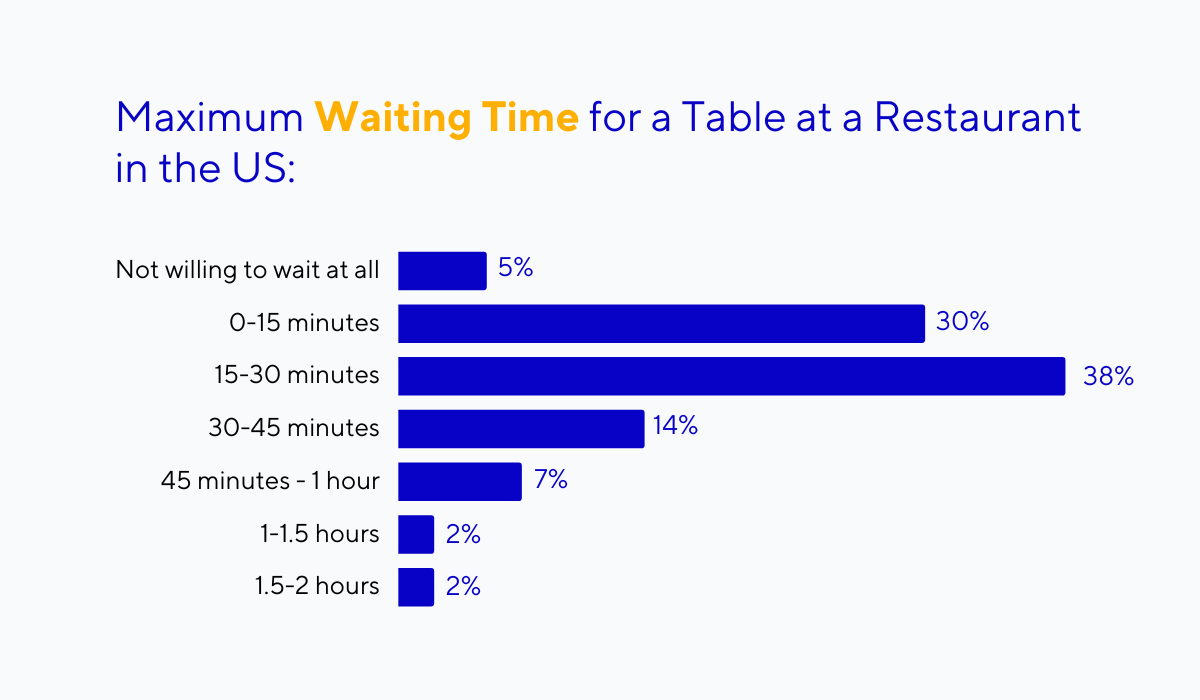
Illustration: Tablein / Data: Statista
A digital waitlist can help you seat your guests within this timeframe or at least help them spend their waiting time more productively.
Let's see how.
Consider a popular downtown bistro. On a typical evening, it's bustling with diners eager to enjoy their meals.
In the past, managing the waitlist meant scribbling names on paper, manually tracking party sizes, and estimating wait times. Errors were common, resulting in frustrated customers and lengthy wait times.
But with digital waitlist software, the bistro's host can now easily manage the waiting list using a tablet or smartphone.
The system calculates accurate wait times based on real-time data, ensuring a smoother and more transparent process.

Source: Tablein
Guests receive text notifications when their table is ready, allowing them to make the most of their waiting time by exploring nearby shops or relaxing at a nearby park.
What's more, some digital lists even allow customers to join from the comfort of their homes, ensuring their tables are ready upon arrival.
This convenience enhances their overall dining experience and contributes to higher satisfaction levels.
For restaurant owners, the advantages are equally compelling.
The digital waitlist optimizes table turnover, boosts operational efficiency, and provides valuable data on peak dining times and guest preferences.
This data-driven approach empowers informed decision-making and enhances the restaurant's profitability.
In conclusion, the digital waitlist can streamline your operations and reduce guest frustration.
Whether you run a bustling downtown bistro or a cozy neighborhood eatery, embracing this tool can elevate your restaurant's performance and reputation.
Digital Menu
Digital menus are a modern solution that can significantly streamline restaurant operations.
Essentially, they are restaurant menus in a digital format, accessible by scanning a QR code with your smartphone.
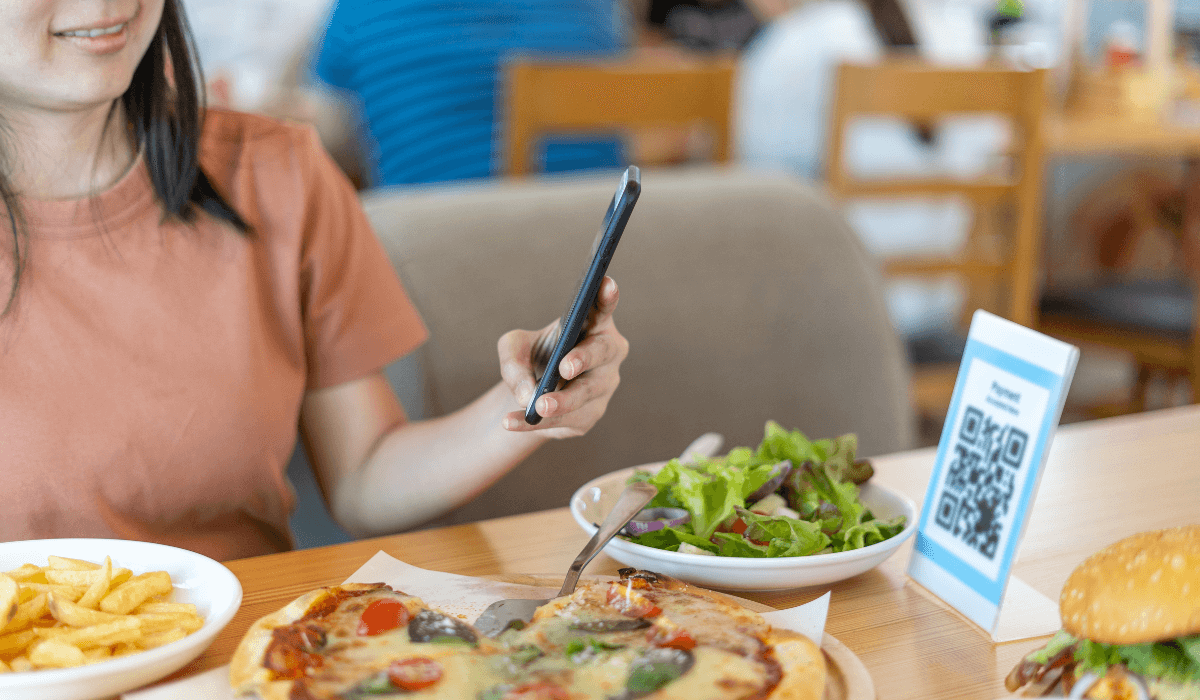
© shisuka via Canva
Digital menus are also those digital boards behind the counters in fast food restaurants.
Just imagine a bustling McDonald's without those boards.
How much time would staff waste distributing paper menus or reciting menu items to each customer?
It would not only be time-consuming but also pretty chaotic, knowing how many people eat daily in McDonald's.
However, the advantages of digital menus extend beyond fast-food chains. Any type of restaurant can benefit from their automation.
Let's see how.
By automating menus, you save time.
Diners can simply scan a QR code to access the menu which eliminates the need for staff to approach each guest and provide physical menus.
When servers do approach the table, customers are already familiar with the menu, making the ordering process quicker and more convenient.
But it doesn't end there.
Some restaurants take it a step further by allowing customers to place orders directly from the menu.
This automation reduces mistakes in orders and makes the information travel faster from the customer to the kitchen, as the staff doesn’t have to physically “take” the order to the back of the house anymore.
Moreover, in places like McDonald's, customers can even pay at that point, making the checkout process much faster, too.
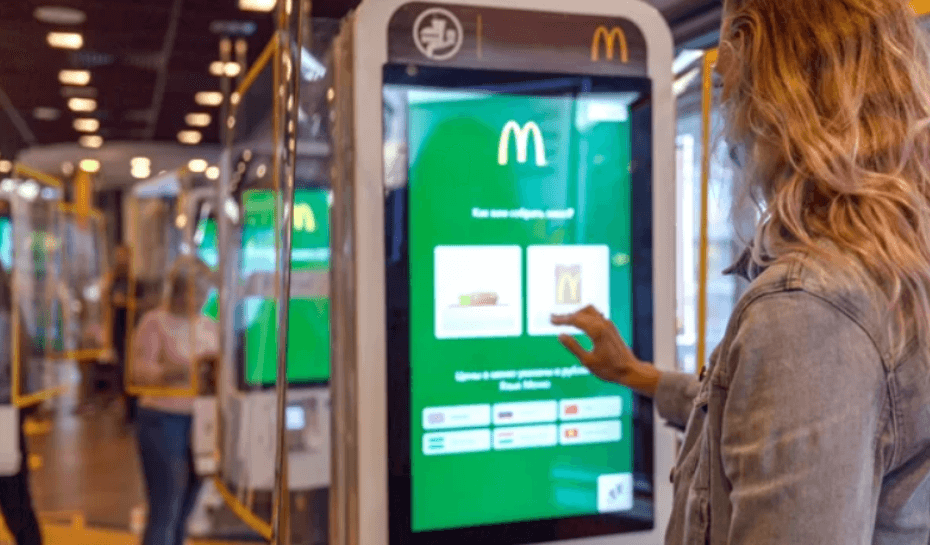
Source: Pickcel
Another great thing about digital menus is that they can be updated easily.
This means you can make significant savings because you don't have to print them out every time you make a change in the menu.
All in all, digital menus are becoming the norm in the fast-paced world we live in.
However, before fully automating your menus, consider your regular customers.
If elderly patrons, who may not be tech-savvy, form a significant portion of your clientele, you should still keep physical menus.
Additionally, it would be smart to offer Wi-Fi access to customers to ensure everyone can access the digital menu.
In conclusion, adopting this automation tool can revolutionize your restaurant's operations, save you and your patrons time, and improve the dining experience.
But to make the most out of digital menus, you first have to consider who your patrons are and whether they can adjust to this new way of ordering.
Cloud-Based POS System
The next automation tool, and arguably the most important one for your restaurant, is a cloud-based point-of-sale system.
Cloud-based POS is a digital software solution that handles various aspects of restaurant management.
It enables your staff to handle orders, process payments, and oversee operations using computers, tablets, or mobile devices.
Unlike traditional POS systems, cloud-based POS operates on remote servers via the Internet, making it more flexible and giving insights into your restaurant’s real-time data.
The report by Toast that we mentioned earlier revealed that 84% of restaurateurs view POS technology as essential for their restaurants, which isn't surprising given the versatility of POS systems.
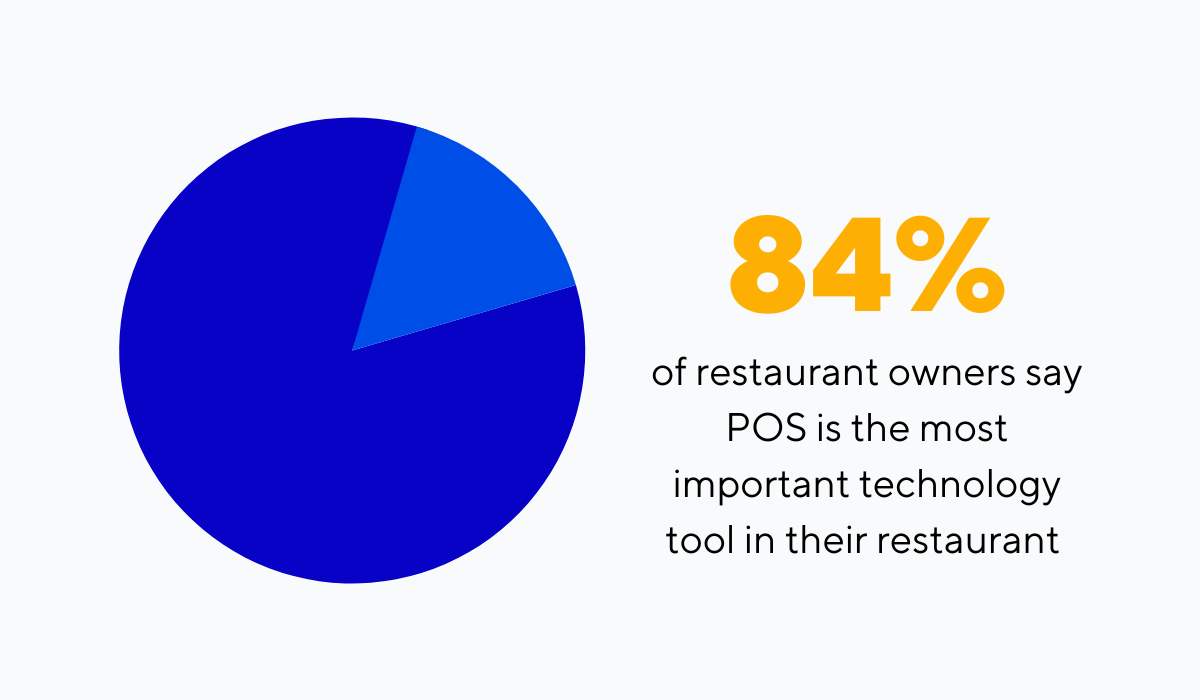
Illustration: Tablein / Data: Toast
Let's explore how this automation tool can streamline your restaurant operations.
First, cloud-based POS can manage orders in real-time.
Remember how your restaurant looks during its busiest.
With a traditional paper-based order system, your server has to take an order at the table, write it down, and then physically walk to the kitchen to submit it.
This process takes time and increases the risk of errors, such as misreading handwriting, for example.
In contrast, with a cloud-based POS system, the server takes an order at the table and enters it on the tablet or mobile device. Once they hit “submit”, the order instantly transmits to the kitchen printers or displays.
Chefs can see the order immediately and start preparing the food without delay.
This not only speeds up the entire dining experience but also reduces the chances of mistakes in the order.
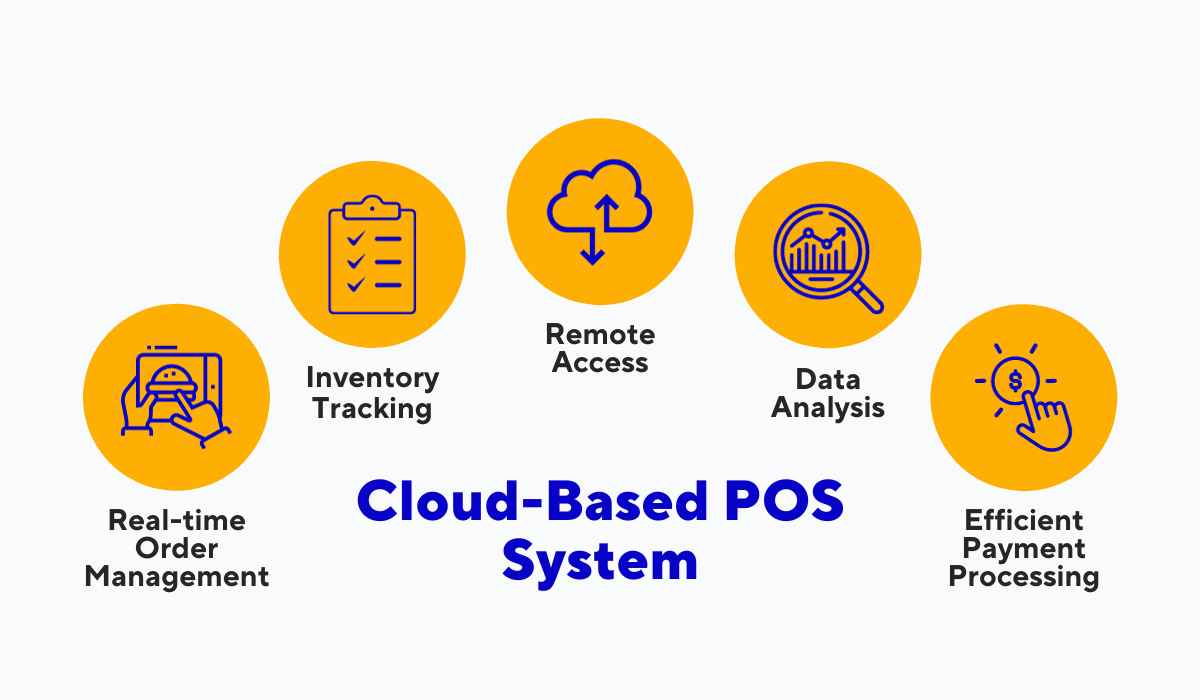
Source: Tablein
Also, these systems often include inventory features.
They automatically track stock levels as items sell.
This prevents overstocking and ingredient shortages, reducing waste and costs.
Finally, cloud-based POS systems generate real-time reports on sales, employee performance, customers, finances, and marketing trends.
These reports help with decisions about staffing, inventory, promotions, and business strategies, improving overall restaurant management.
In summary, cloud-based POS systems optimize restaurant operations with real-time order management, automated inventory control, and data-driven insights.
This automation tool is flexible and accessible, which makes it valuable for modern restaurants aiming for efficiency and profitability.
Kitchen Display System
A kitchen display system or KDS is the last automation tool we will mention today, but it is by no means any less important.
The KDS is essentially the kitchen's command center.
It works hand in hand with the POS system, which takes orders from waitstaff or customers and sends them to the kitchen.
When the kitchen display system receives an order from the POS software, it displays it on the screen in the kitchen.
This allows kitchen staff to easily view and process orders in real-time, ensuring accurate and timely preparation of dishes.
And if your chefs start preparing dishes immediately, your customers will be served much sooner which will reduce wait times for food.
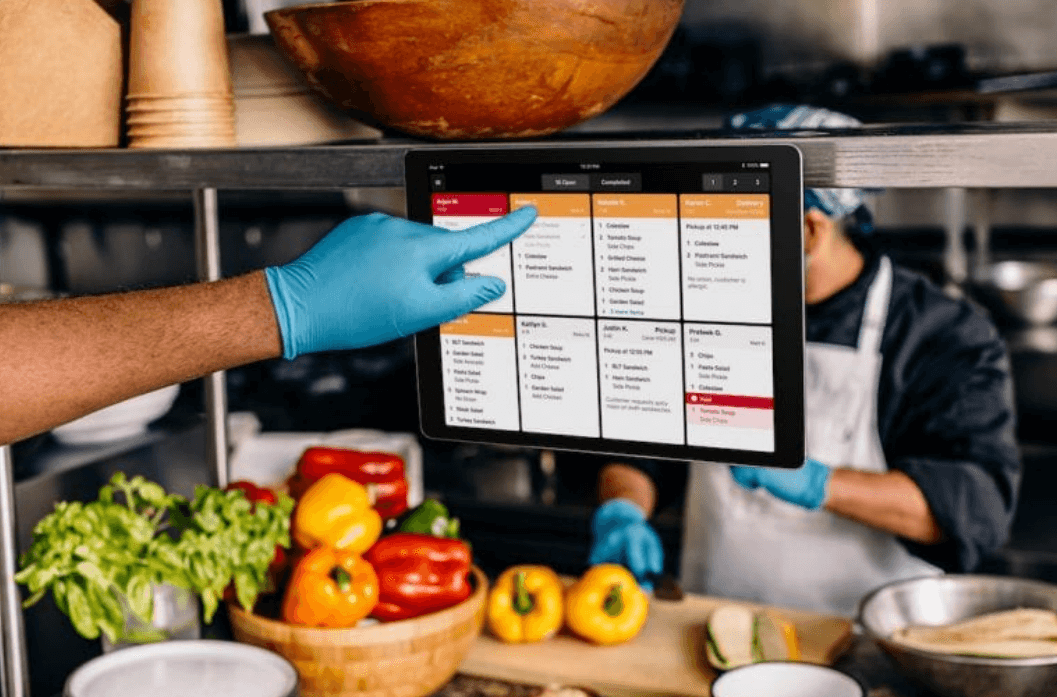
Source: Pymnts
Another great feature of the kitchen display system is that it organizes the orders and how they come in.
This eliminates any confusion about which guests and tables should be served first. In fact, the kitchen display system can organize orders so that the guests at the same table get their food at the same time.
But it goes beyond that.
The system can prioritize orders based on factors such as cooking times and dining room locations. This ensures that hot dishes stay hot, cold dishes stay cold, and all orders are served promptly.
Also, KDS can display comments about specific requests or menu changes, allowing chefs to make timely adjustments to the meal.
All of these elements contribute to a better customer experience.
In essence, this tool improves communication between the front-of-house and back-of-house teams, leading to faster service, reduced errors, and an overall improved dining experience.
When you reflect on all the benefits that the KDS, together with POS systems, can bring to your restaurant, it becomes clear that these are tools worth having.
Conclusion
In this article, we've explored five automation tools that can make your restaurant operations more efficient.
Each of these tools has the potential to benefit your business.
From restaurant reservation software that automates bookings to a digital waitlist that improves table turnover and guest satisfaction, digital menus that speed up service, and cloud-based POS and kitchen displays that save staff time while giving chefs more room to work.
The advantages these tools bring to your restaurant are clear and compelling.
Whether you run a fish restaurant like the one we mentioned at the beginning of our story or any other dining establishment, integrating these tools can improve your efficiency and customer experience.
It's a worthwhile investment that can elevate your restaurant's success.
Get a 30-day Exclusive Trial
As a Tablein blog reader, you’re eligible for an exclusive 30-day free trial to experience our simple reservation solution for your restaurant.
Enter your business email, and we’ll send you all the steps needed to create your account.
Share this
You may also like
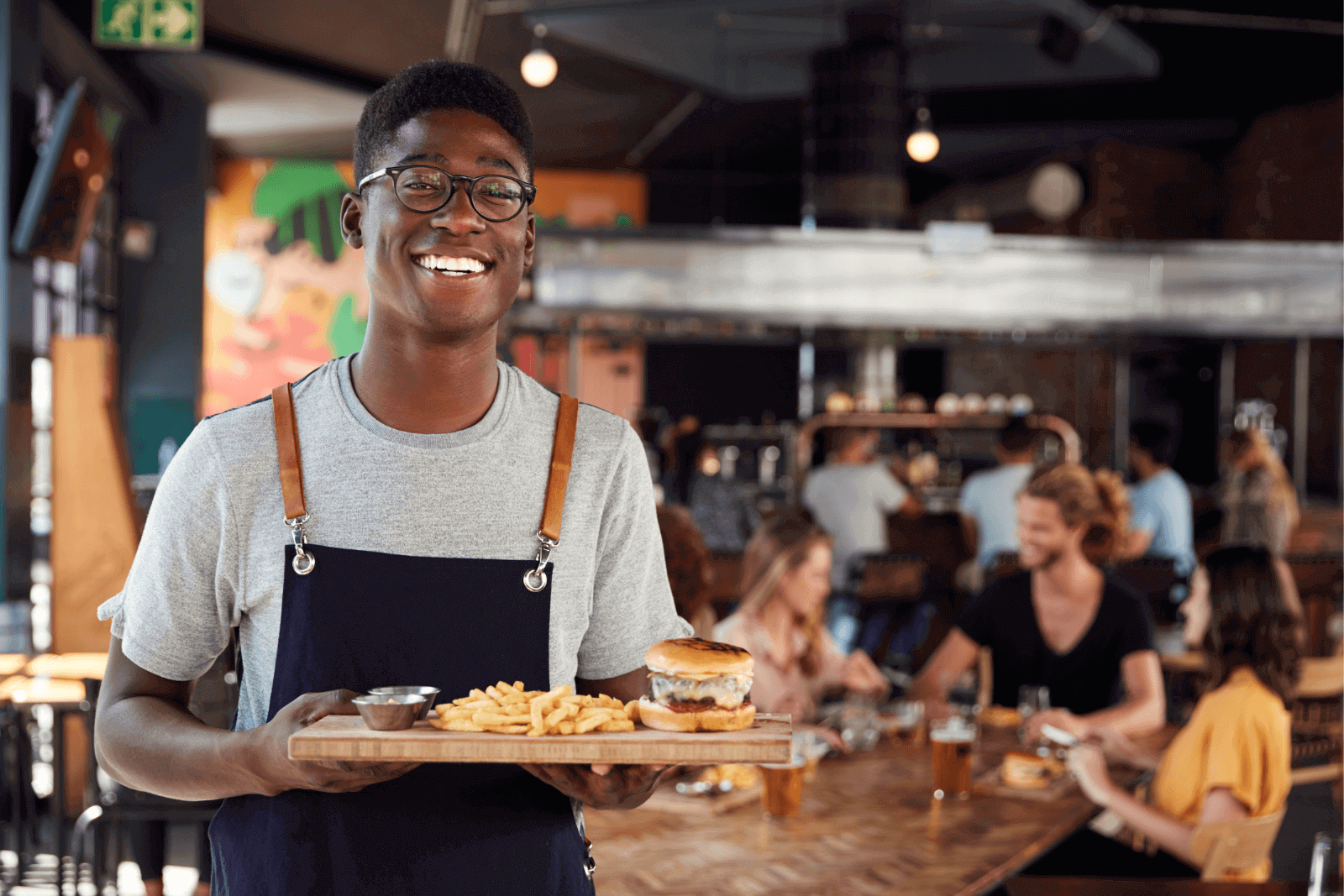
7 Important Benefits of Restaurant Automation
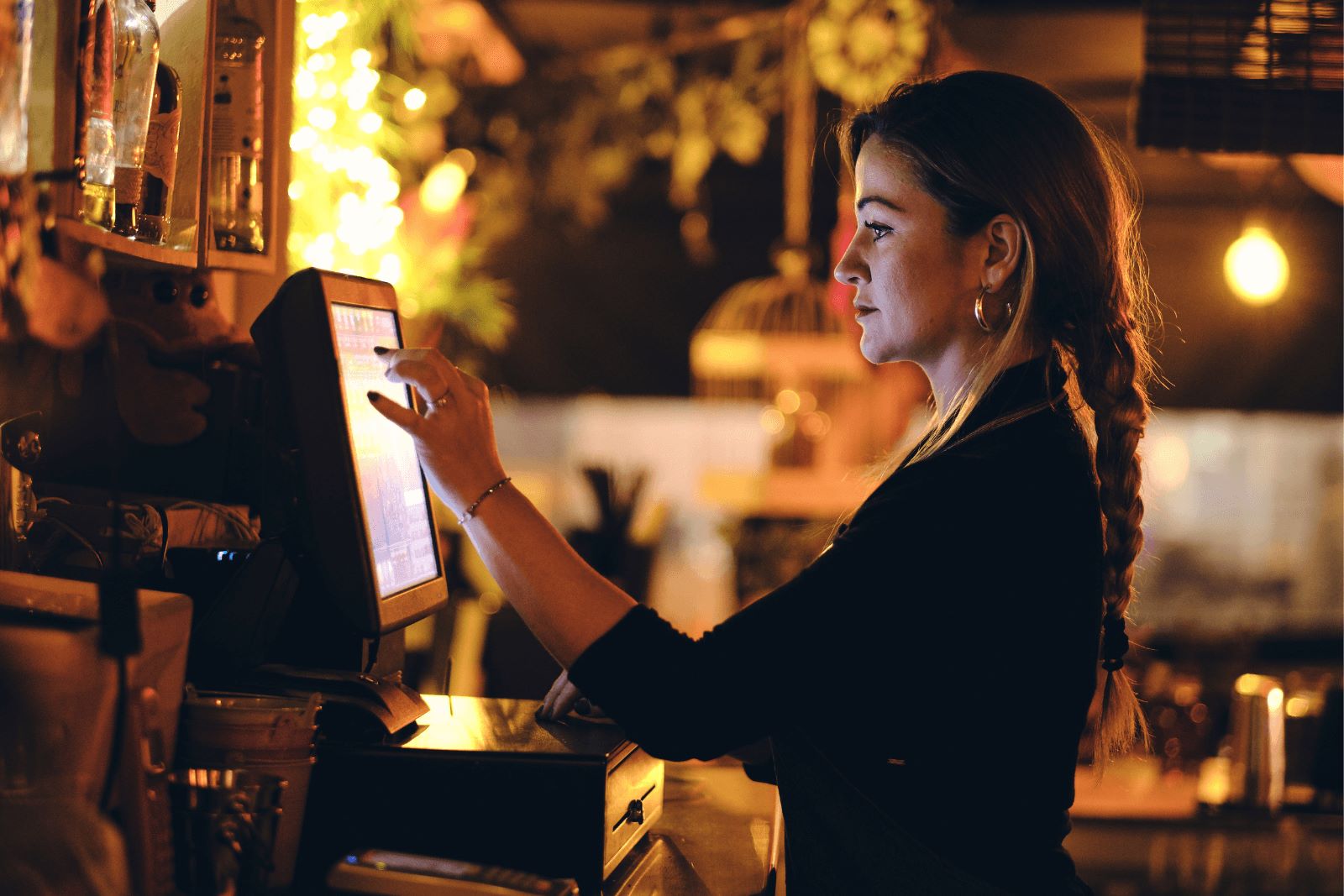
The Full Guide to Restaurant Automation
